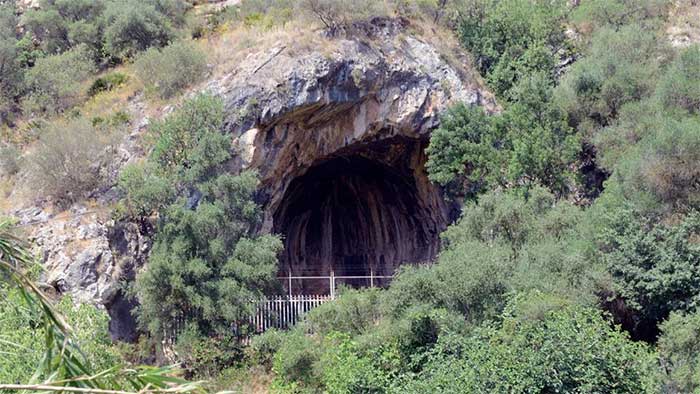A society of an extinct human species may have been “ahead of its time” in certain areas, such as healthcare.
A research team led by anthropologist Mercedes Conde-Valverde from the University of Alcala (Spain) reanalyzed a fossil specimen of another human species coded CN-46700, excavated from the Cova Negra cave since 1989.
CN-46700 consists of the remains of a Neanderthal child, dating back approximately 273,000 to 146,000 years ago, the period when this ancient human species inhabited the area.

Cova Negra cave, where ancient Neanderthals once lived – (Photo: CNN).
The researchers utilized micro-CT scanning to create a 3D model of the original fossil for analysis.
They discovered signs of health issues, including a smaller cochlea, with abnormalities that could lead to hearing loss and severe dizziness. “The only syndrome compatible with all the anomalies found in CN-46700 is Down syndrome” – Dr. Conde-Valverde stated.
Down syndrome is not only present in humans but also in both ancient and modern ape species.
However, the shocking aspect of this discovery is that the child was six years old at the time of death.
According to Science Alert, previous archaeological evidence indicated that children with Down syndrome in the Iron Age rarely survived beyond 16 months of age.
By 1900, medical advancements and healthcare systems allowed individuals with Down syndrome to have an average lifespan of nine years.
Today, after countless advancements in medicine and social models, individuals with this condition can even live as long as healthy individuals.
Thus, the fact that a child with Down syndrome hundreds of thousands of years ago could live longer than children in the Iron Age and nearly as long as those in the early 20th century is almost unbelievable.
Down syndrome is often associated with deficits affecting growth, physical and cognitive development, and motor skills.
Children with this syndrome typically experience delays in walking and speaking, balance and coordination issues increase their risk of falls, and they may have difficulty feeding due to low muscle tone.
Therefore, the care from the mother alone, given the primitive conditions of prehistoric life, would not have been sufficient for the child to survive until age six. The existence of CN-46700 suggests that this child received extensive and continuous support from a larger group.
This implies that Neanderthals may have evolved much faster than we previously thought, and their social structure could have been even more complex than our own during the same period.
Earlier evidence also suggests that these ancient humans were not the wild apes once thought, but possessed many impressive skills thousands of years ago, from weaving fibers and crafting tools to making jewelry.
Neanderthals went extinct around 30,000 years ago and belong to the same genus Homo (genus of modern humans) as Homo sapiens.





















































